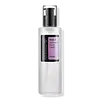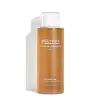What's inside
What's inside
 Key Ingredients
Key Ingredients

 Benefits
Benefits

 Concerns
Concerns

 Ingredients Side-by-side
Ingredients Side-by-side

Water
Skin ConditioningGlycerin
HumectantPropanediol
SolventNiacinamide
SmoothingMethylpropanediol
Solvent1,2-Hexanediol
Skin ConditioningPolyglyceryl-10 Laurate
Skin ConditioningButylene Glycol
HumectantSodium Citrate
BufferingCitric Acid
BufferingAmmonium Acryloyldimethyltaurate/Vp Copolymer
Ethylhexylglycerin
Skin ConditioningCaramel
Cosmetic ColorantPolyquaternium-51
Skin ConditioningCamellia Sinensis Leaf Extract
AntimicrobialSodium Hyaluronate Crosspolymer
HumectantHydrolyzed Glycosaminoglycans
HumectantPhellinus Linteus Extract
Skin ConditioningSodium Hyaluronate
HumectantBenzyl Glycol
SolventHydrolyzed Hyaluronic Acid
HumectantCarum Petroselinum Extract
Skin ConditioningBrassica Oleracea Acephala Leaf Extract
HumectantAdansonia Digitata Seed Extract
Skin ConditioningMelaleuca Alternifolia Leaf Extract
PerfumingHouttuynia Cordata Extract
Skin ConditioningPinus Pinaster Leaf Extract
Skin ConditioningSprout Extract
AntioxidantMel Extract
MoisturisingLimus Extract
Skin ConditioningMacrocystis Pyrifera Extract
Skin ConditioningMentha Piperita Leaf Extract
Skin ConditioningActinidia Deliciosa Fruit Extract
Skin ConditioningAloe Ferox Leaf Extract
Skin ConditioningCentella Asiatica Extract
CleansingTerminalia Ferdinandiana Fruit Extract
AntioxidantCucumis Sativus Fruit Extract
EmollientRosa Alba Leaf Cell Extract
AntioxidantMorinda Citrifolia Fruit Extract
Skin ConditioningHyaluronic Acid
HumectantRaspberry Ketone
MaskingLimonene
PerfumingParfum
MaskingWater, Glycerin, Propanediol, Niacinamide, Methylpropanediol, 1,2-Hexanediol, Polyglyceryl-10 Laurate, Butylene Glycol, Sodium Citrate, Citric Acid, Ammonium Acryloyldimethyltaurate/Vp Copolymer, Ethylhexylglycerin, Caramel, Polyquaternium-51, Camellia Sinensis Leaf Extract, Sodium Hyaluronate Crosspolymer, Hydrolyzed Glycosaminoglycans, Phellinus Linteus Extract, Sodium Hyaluronate, Benzyl Glycol, Hydrolyzed Hyaluronic Acid, Carum Petroselinum Extract, Brassica Oleracea Acephala Leaf Extract, Adansonia Digitata Seed Extract, Melaleuca Alternifolia Leaf Extract, Houttuynia Cordata Extract, Pinus Pinaster Leaf Extract, Sprout Extract, Mel Extract, Limus Extract, Macrocystis Pyrifera Extract, Mentha Piperita Leaf Extract, Actinidia Deliciosa Fruit Extract, Aloe Ferox Leaf Extract, Centella Asiatica Extract, Terminalia Ferdinandiana Fruit Extract, Cucumis Sativus Fruit Extract, Rosa Alba Leaf Cell Extract, Morinda Citrifolia Fruit Extract, Hyaluronic Acid, Raspberry Ketone, Limonene, Parfum
 Reviews
Reviews

Ingredients Explained
These ingredients are found in both products.
Ingredients higher up in an ingredient list are typically present in a larger amount.
1,2-Hexanediol is a synthetic liquid and another multi-functional powerhouse.
It is a:
- Humectant, drawing moisture into the skin
- Emollient, helping to soften skin
- Solvent, dispersing and stabilizing formulas
- Preservative booster, enhancing the antimicrobial activity of other preservatives
Butylene Glycol (or BG) is used within cosmetic products for a few different reasons:
Overall, Butylene Glycol is a safe and well-rounded ingredient that works well with other ingredients.
Though this ingredient works well with most skin types, some people with sensitive skin may experience a reaction such as allergic rashes, closed comedones, or itchiness.
Learn more about Butylene GlycolNiacinamide is a multitasking form of vitamin B3 that strengthens the skin barrier, reduces pores and dark spots, regulates oil, and improves signs of aging.
And the best part? It's gentle and well-tolerated by most skin types, including sensitive and reactive skin.
You might have heard of "niacin flush", or the reddening of skin that causes itchiness. Niacinamide has not been found to cause this.
In very rare cases, some individuals may not be able to tolerate niacinamide at all or experience an allergic reaction to it.
If you are experiencing flaking, irritation, and dryness with this ingredient, be sure to double check all your products as this ingredient can be found in all categories of skincare.
When incorporating niacinamide into your routine, look out for concentration amounts. Typically, 5% niacinamide provides benefits such as fading dark spots. However, if you have sensitive skin, it is better to begin with a smaller concentration.
When you apply niacinamide to your skin, your body converts it into nicotinamide adenine dinucleotide (NAD). NAD is an essential coenzyme that is already found in your cells as "fuel" and powers countless biological processes.
In your skin, NAD helps repair cell damage, produce new healthy cells, support collagen production, strengthen the skin barrier, and fight environmental stressors (like UV and pollution).
Our natural NAD levels start to decline with age, leading to slower skin repair, visible aging, and a weaker skin barrier. By providing your skin niacinamide, you're recharging your skin's NAD levels. This leads to stronger, healthier, and younger looking skin.
Another name for vitamin B3 is nicotinamide. This vitamin is water-soluble and our bodies don't store it. We obtain Vitamin B3 from either food or skincare. Meat, fish, wheat, yeast, and leafy greens contain vitamin B3.
The type of niacinamide used in skincare is synthetically created.
Learn more about NiacinamideSodium Hyaluronate is hyaluronic acid's salt form. It is commonly derived from the sodium salt of hyaluronic acid.
Like hyaluronic acid, it is great at holding water and acts as a humectant. This makes it a great skin hydrating ingredient.
Sodium Hyaluronate is naturally occurring in our bodies and is mostly found in eye fluid and joints.
These are some other common types of Hyaluronic Acid:
Learn more about Sodium Hyaluronate